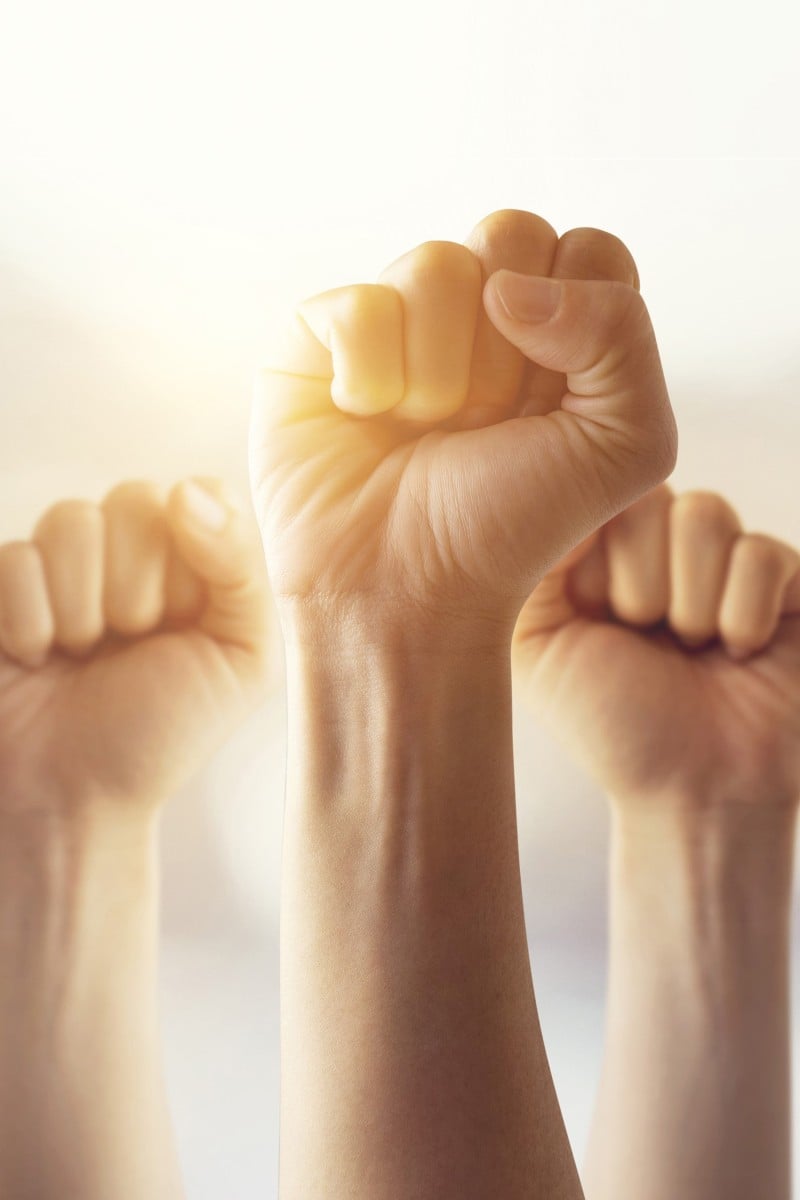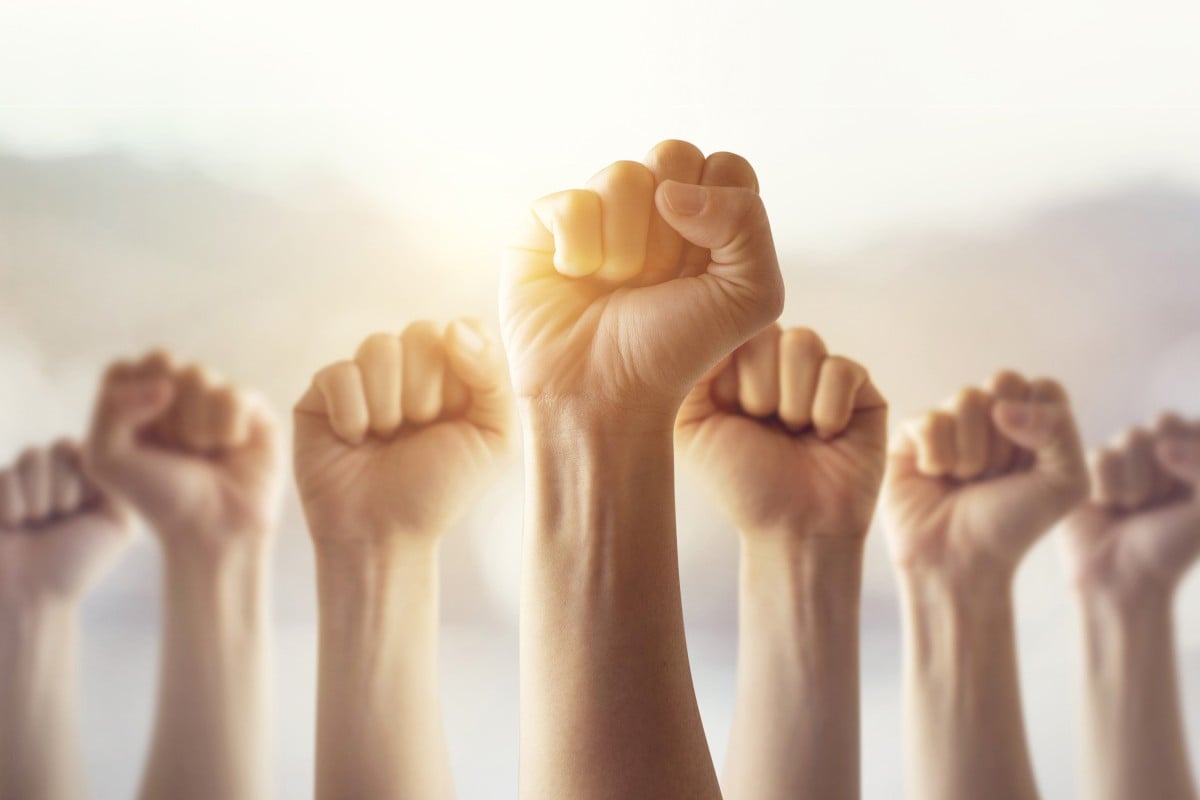
As demonstrators continue to hold rallies, block roads, and boycott classes, we take a look at where the idea of non-cooperation comes from

This summer’s heat in the city has been unbearable. Its usual subtropical warmth has been further inflamed by tear gas and Molotov cocktails, igniting the Hong Kong air into an inferno that many have no idea how to put out.
September heralds the start of a new season, and with it comes a wave of non-cooperation movements. University students, secondary students, and Hongkongers from all walks of life went on a citywide strike on September 2 and 3. On this day, class boycott activities took place in about 200 secondary schools, according to pro-democracy party Demosisto. More were organised as the week rolled on. Some protesters are also not paying their fares when taking the MTR.
Last Monday, about 4,000 secondary students stood in torrential rain for a class boycott rally at Edinburgh Place in Central. Later that same day, 30,000 people – mostly university and secondary students – attended a school strike assembly at Chinese University.
Hong Kong protests explained: A guide to the key words you see in the news
Representatives from the labour sector also organised a mass gathering at Tamar Park in Admiralty as part of the citywide strike last Monday and Tuesday. Organisers said 40,000 people showed up.
The idea of not cooperating with the government in the hopes of bringing forth change in society is by no means new, and can be dated back to the mid-19th century and American philosopher Henry David Thoreau.
In his essay titled “Resistance to Civil Government”, also known as “Civil Disobedience”, he explained why it was necessary to obey one’s conscience over an unjust law. There, he argued for non-violent means to protest against a government’s actions.
In defiance of the Mexican-American war (1846-1848) and the expansion of slavery in America’s southwest, Thoreau had stopped paying his taxes in 1842 and was later arrested in 1846.
“If 1,000 men were not to pay their tax bills this year, that would not be a violent and bloody measure, as it would be to pay them, and enable the State to commit violence and shed innocent blood,” he argued in his essay. “This is, in fact, the definition of a peaceable revolution, if any such is possible.”
About 60 years later, Mahatma Gandhi read Thoreau’s essay while he was in South Africa. Later, he acknowledged its influence on his thinking about how to help achieve Indian independence.
After declaring that British rule over India had survived only because of the cooperation of the country’s people, Gandhi staged a series of non-cooperation movements, which included boycotting British goods, burning British items of clothing, and shunning British institutions and government employment.
It was a comprehensive campaign that aimed to cripple British power. The ground rules that Gandhi laid out, however, were to not injure or kill anyone, not even the British people. Even when the opposition used violence, he was adamant that Indians should only express their discontent with peace.
Gandhi was arrested and imprisoned for repeatedly defying the law. One example is when he refused to pay the British salt tax, which was a tax based on a British monopoly on salt production. Despite the violation being regarded as a criminal offence, Gandhi called this form of non-violence satyagraha, meaning “truth-force” or “love-force”.
His attitude later lent strength to the American civil rights movement, as shown when Martin Luther King Jr spoke of Gandhi as the guiding light of their technique of social change.
King was one of the leaders of the famous Montgomery bus boycott (1955-1956). African Americans, who then made up 75 per cent of all bus commuters in Montgomery in the US state of Alabama, stopped taking buses to protest segregated seating. That, King wrote in his book Stride Toward Freedom: The Montgomery Story, showed it was possible to resist evil without turning to violence.
Although Thoreau’s idea about civil disobedience is popular, some scholars are sceptical. In an article in American magazine The New Yorker, journalist Kathryn Schulz said there is the problem of fallibility. Thoreau believes that one’s conscience should rule over “unjust laws” – but what if our conscience leads us to do wrong? On what grounds can we prove that our conscience would be more just than the laws?
In a book called The Case Against Thoreau, scholar Vincent Buranelli argued that Thoreau had not considered how his ideas could be executed in reality. If two people both believe firmly that they are in the right, and yet their beliefs are mutually incompatible, who should be trusted? “Antagonism is never worse than when it involves two men, each of whom is convinced that he speaks for goodness and rectitude,” wrote Buranelli.
Hong Kong’s Chief Executive Carrie Lam Cheng Yuet-ngor announced the complete withdrawal of the extradition bill last Wednesday, but the news was not well-received by the public. Most people still believe the establishment of an independent commission of inquiry into the clashes between the police and protesters is as urgent as ever.
More non-cooperation movements have already been planned at the airport and schools this month. At this point, no one can foresee where Hong Kong is heading. Will the disobedience go on indefinitely? Only time, as the cliché goes, will tell.
